 MSU & SkolTech Phage and virus replication
MSU & SkolTech Phage and virus replication
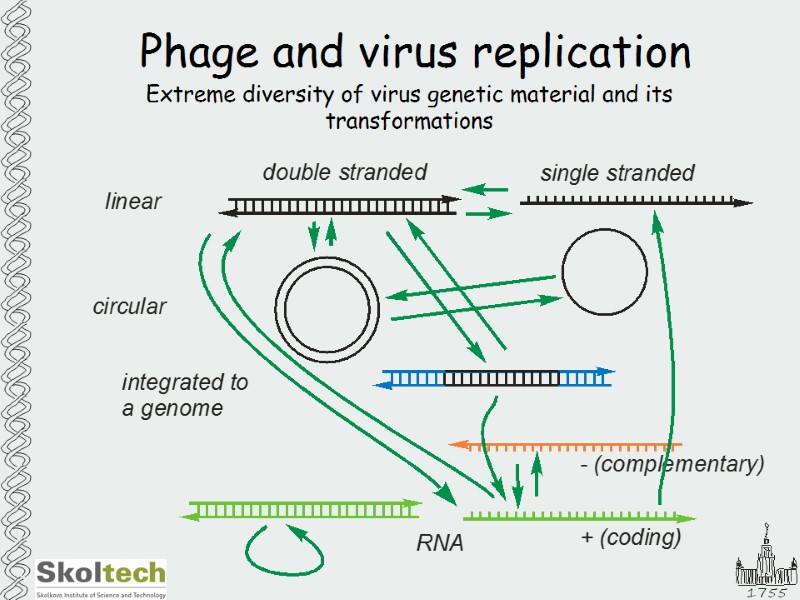 Phage and virus replication Extreme diversity of virus genetic material and its transformations
Phage and virus replication Extreme diversity of virus genetic material and its transformations
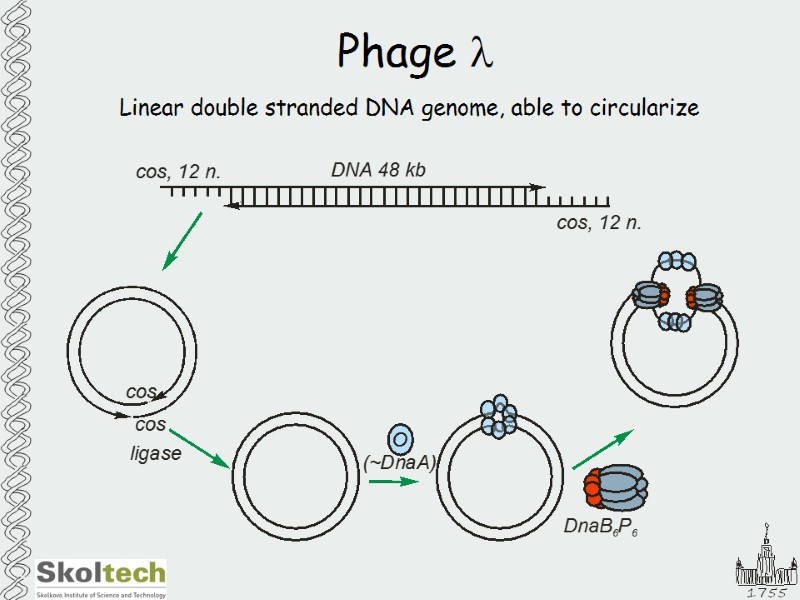 Phage l Linear double stranded DNA genome, able to circularize
Phage l Linear double stranded DNA genome, able to circularize
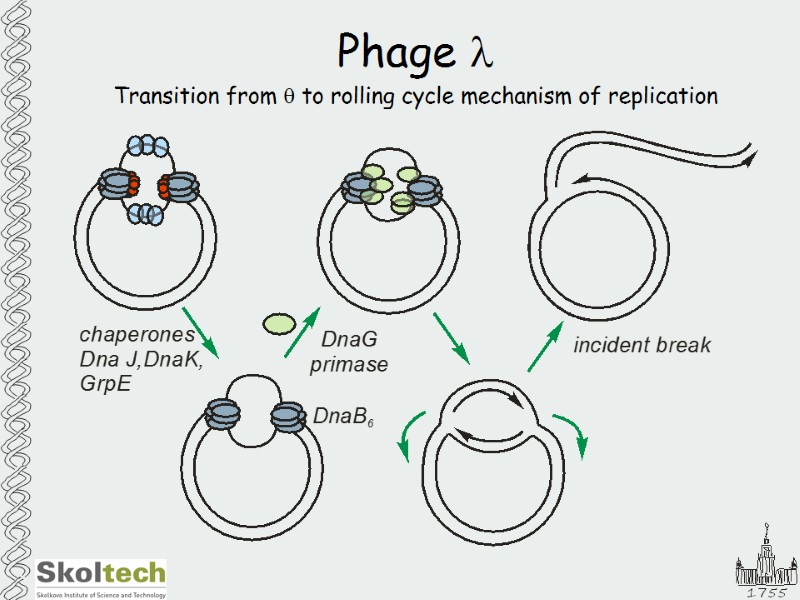 Phage l Transition from to rolling cycle mechanism of replication
Phage l Transition from to rolling cycle mechanism of replication
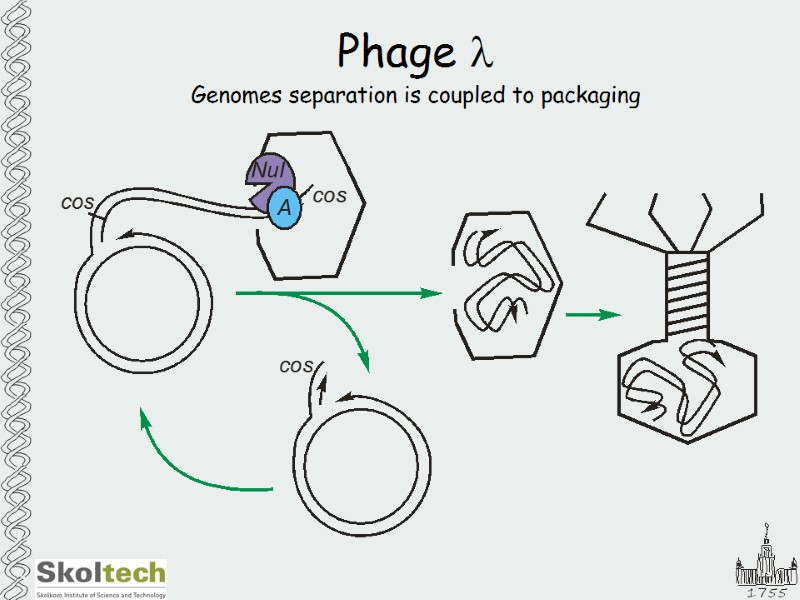 Phage l Genomes separation is coupled to packaging
Phage l Genomes separation is coupled to packaging
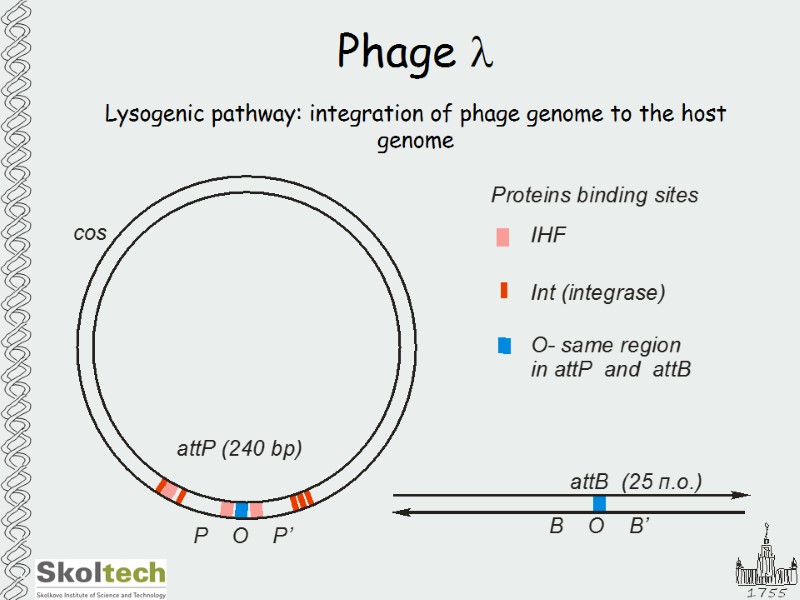 Phage l Lysogenic pathway: integration of phage genome to the host genome
Phage l Lysogenic pathway: integration of phage genome to the host genome
 Phage l Integration of phage genome to the host genome via covalent intermediate
Phage l Integration of phage genome to the host genome via covalent intermediate
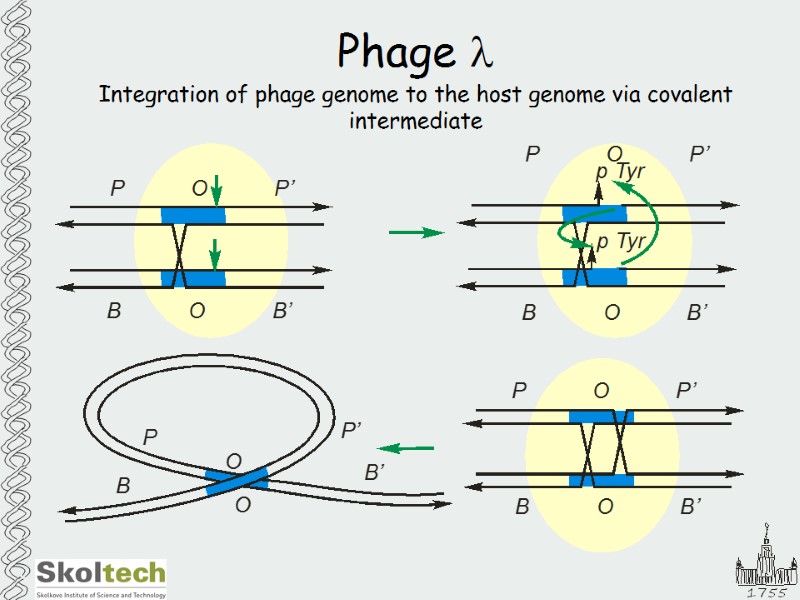 Phage l Integration of phage genome to the host genome via covalent intermediate
Phage l Integration of phage genome to the host genome via covalent intermediate
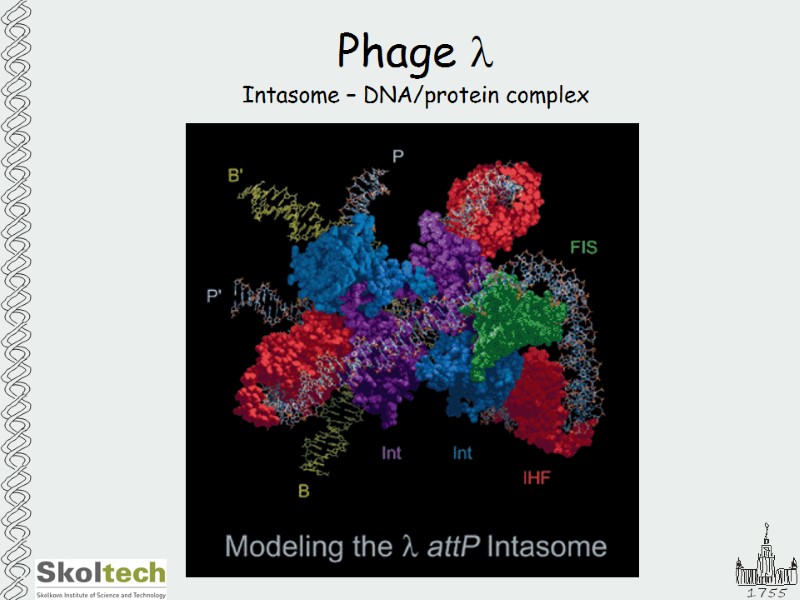 Phage l Intasome – DNA/protein complex
Phage l Intasome – DNA/protein complex
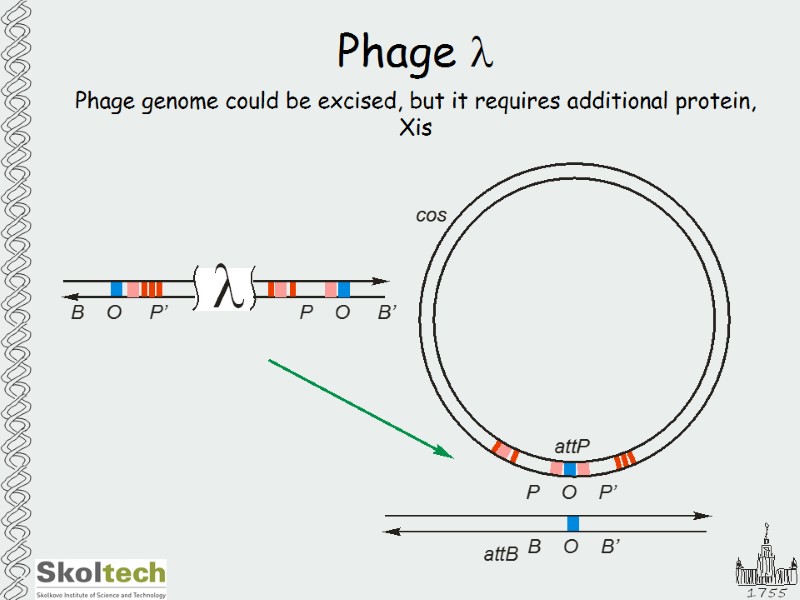 Phage l Phage genome could be excised, but it requires additional protein, Xis
Phage l Phage genome could be excised, but it requires additional protein, Xis
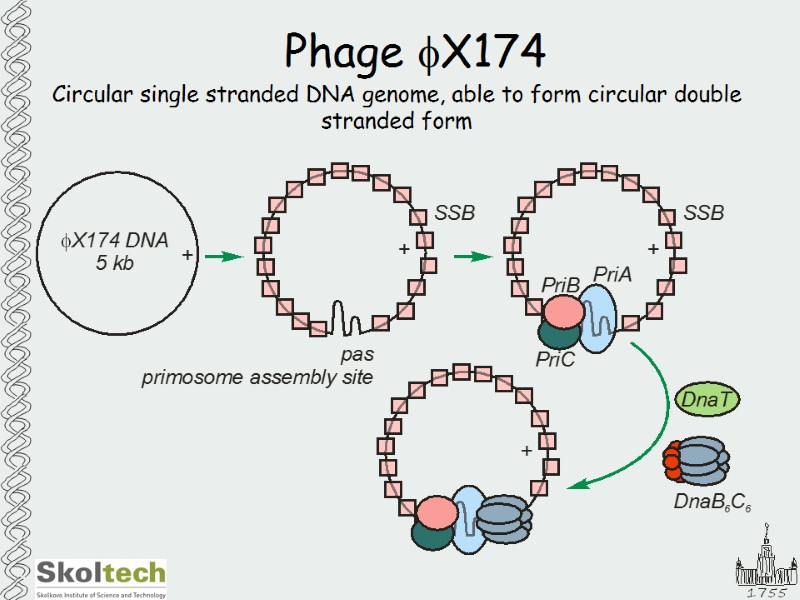 Phage fX174 Circular single stranded DNA genome, able to form circular double stranded form
Phage fX174 Circular single stranded DNA genome, able to form circular double stranded form
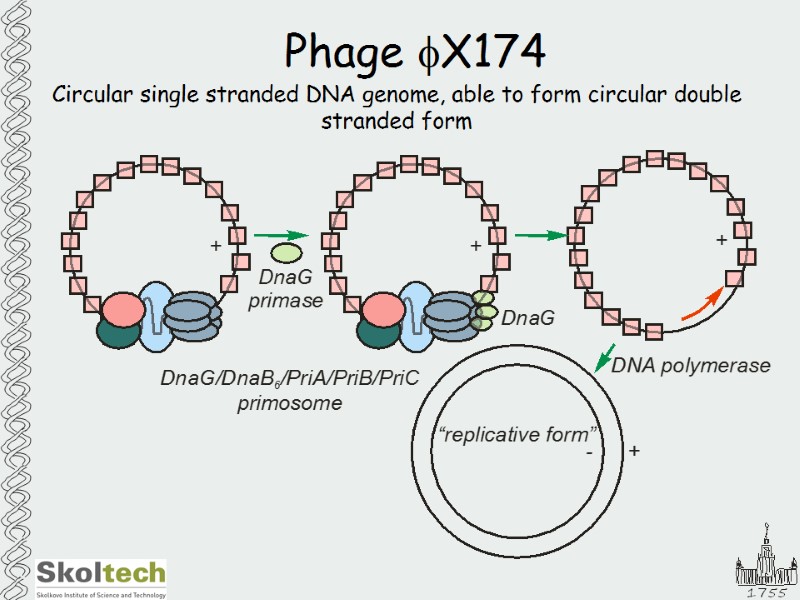 Phage fX174 Circular single stranded DNA genome, able to form circular double stranded form
Phage fX174 Circular single stranded DNA genome, able to form circular double stranded form
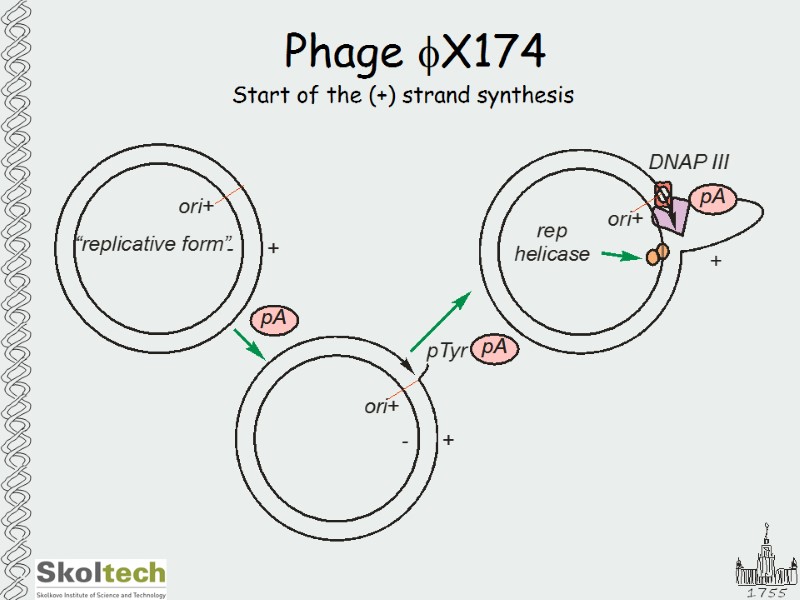 Phage fX174 Start of the (+) strand synthesis
Phage fX174 Start of the (+) strand synthesis
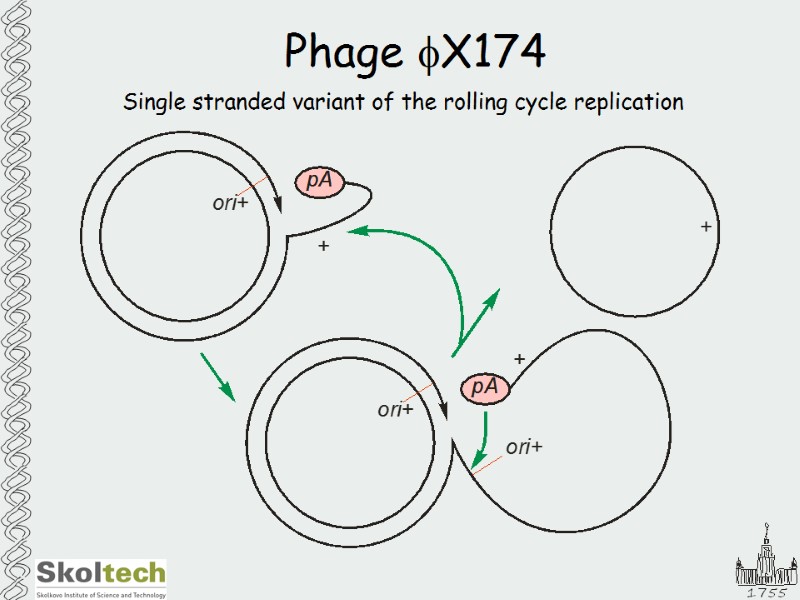 Phage fX174 Single stranded variant of the rolling cycle replication
Phage fX174 Single stranded variant of the rolling cycle replication
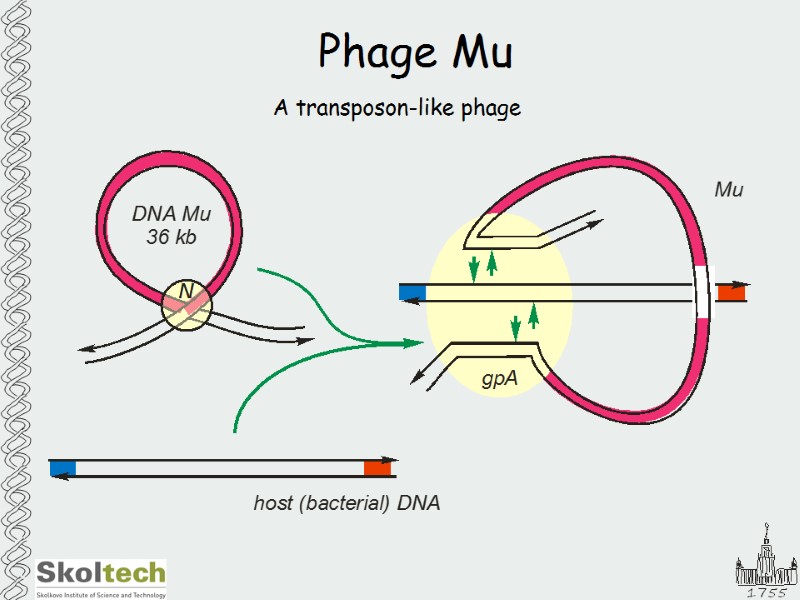 Phage Mu A transposon-like phage
Phage Mu A transposon-like phage
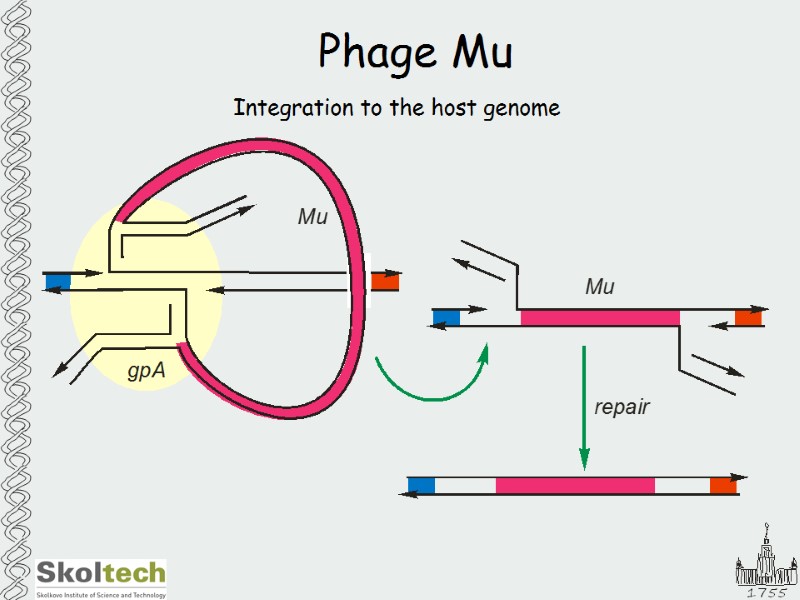 Phage Mu Integration to the host genome
Phage Mu Integration to the host genome
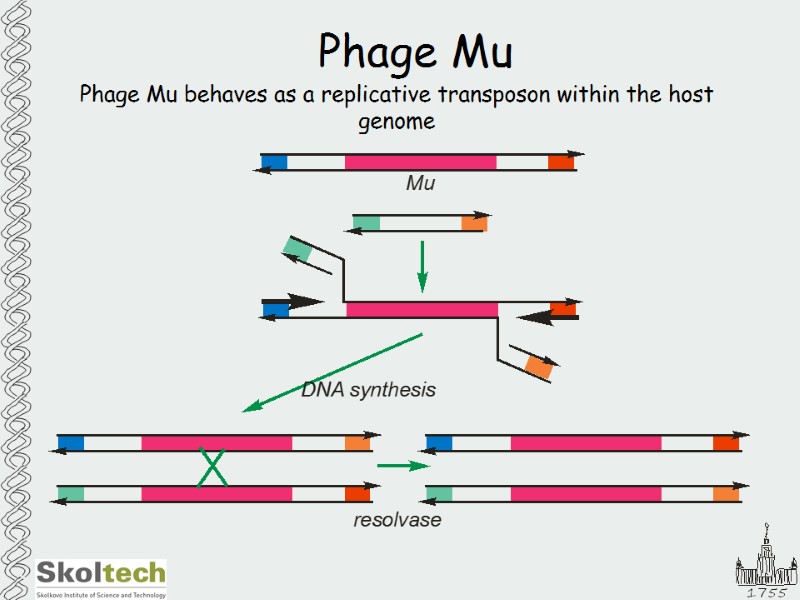 Phage Mu Phage Mu behaves as a replicative transposon within the host genome
Phage Mu Phage Mu behaves as a replicative transposon within the host genome
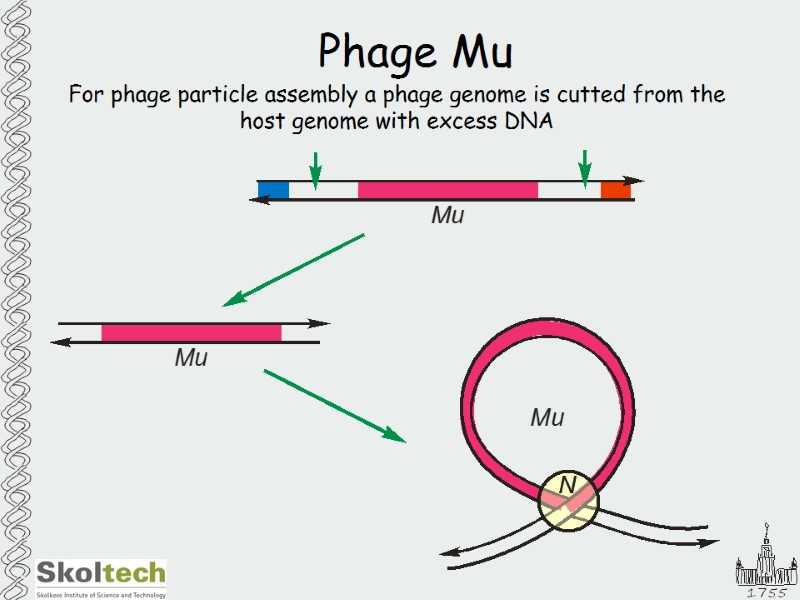 Phage Mu For phage particle assembly a phage genome is cutted from the host genome with excess DNA
Phage Mu For phage particle assembly a phage genome is cutted from the host genome with excess DNA
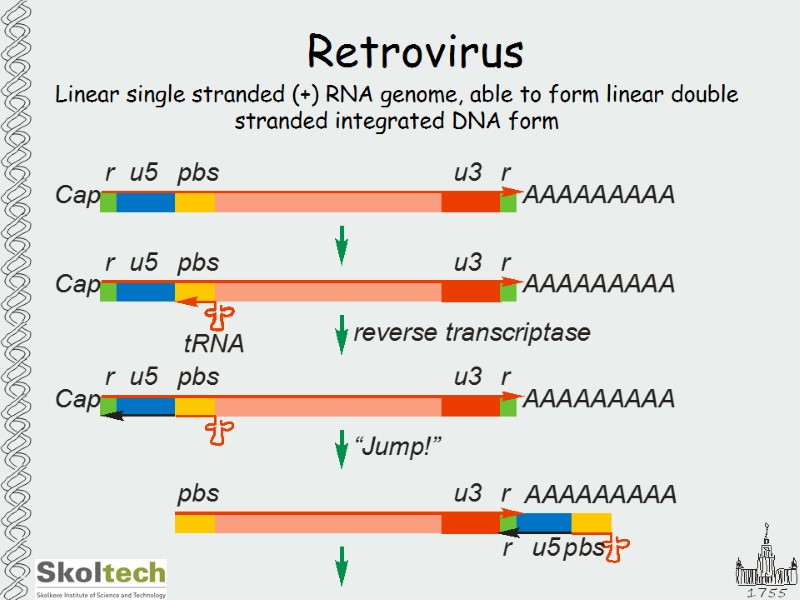 Retrovirus Linear single stranded (+) RNA genome, able to form linear double stranded integrated DNA form
Retrovirus Linear single stranded (+) RNA genome, able to form linear double stranded integrated DNA form
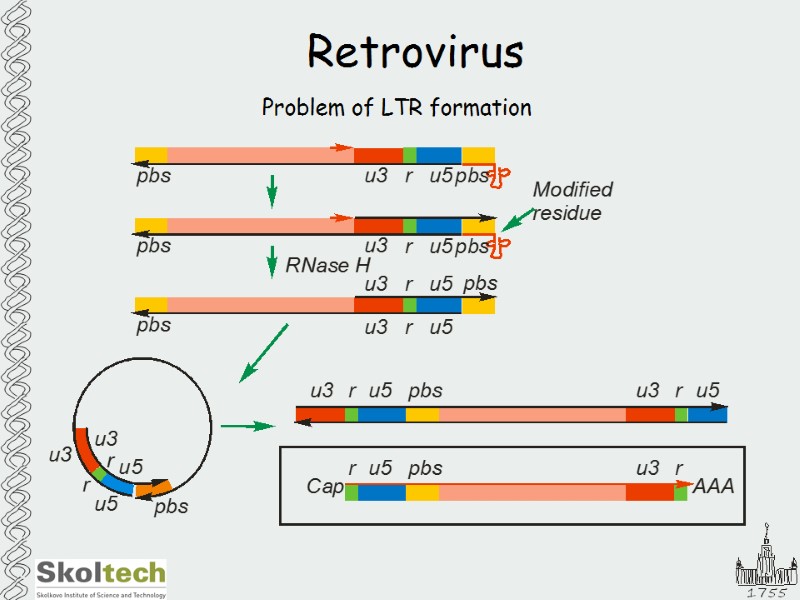 Retrovirus Problem of LTR formation
Retrovirus Problem of LTR formation
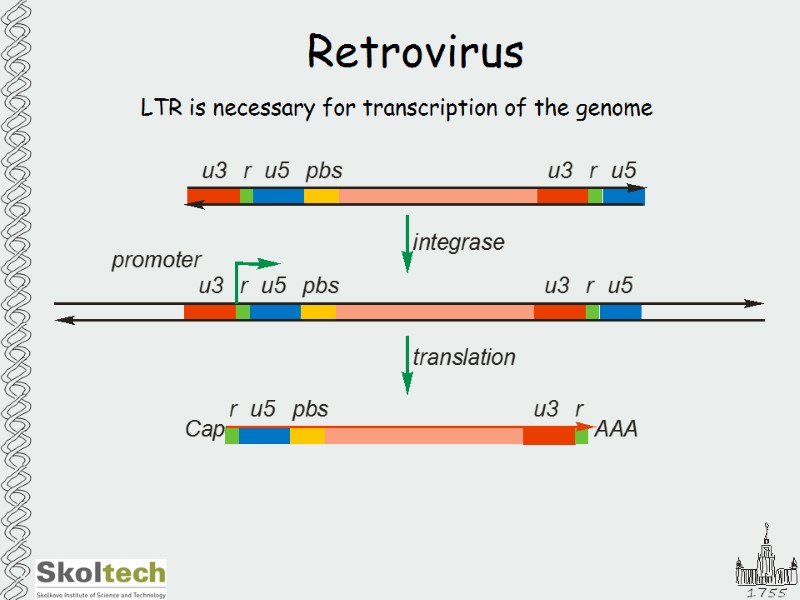 Retrovirus LTR is necessary for transcription of the genome
Retrovirus LTR is necessary for transcription of the genome
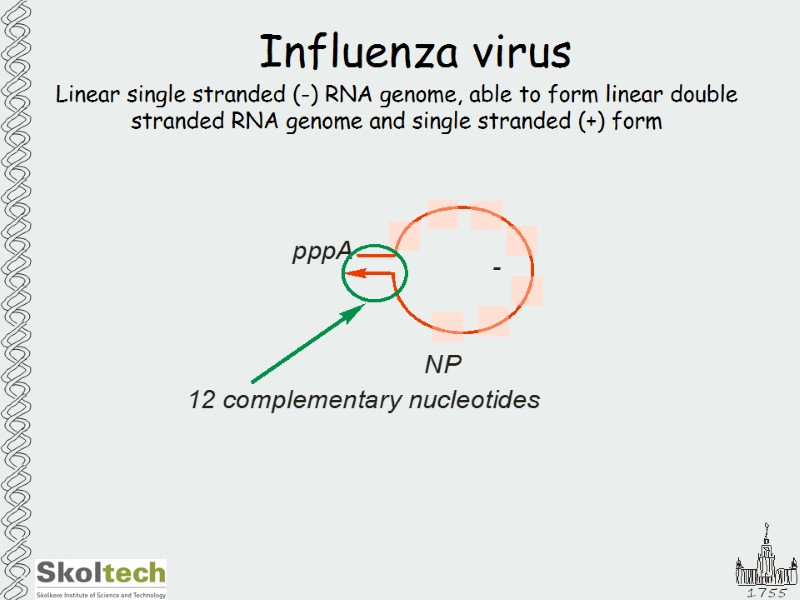 Influenza virus Linear single stranded (-) RNA genome, able to form linear double stranded RNA genome and single stranded (+) form
Influenza virus Linear single stranded (-) RNA genome, able to form linear double stranded RNA genome and single stranded (+) form
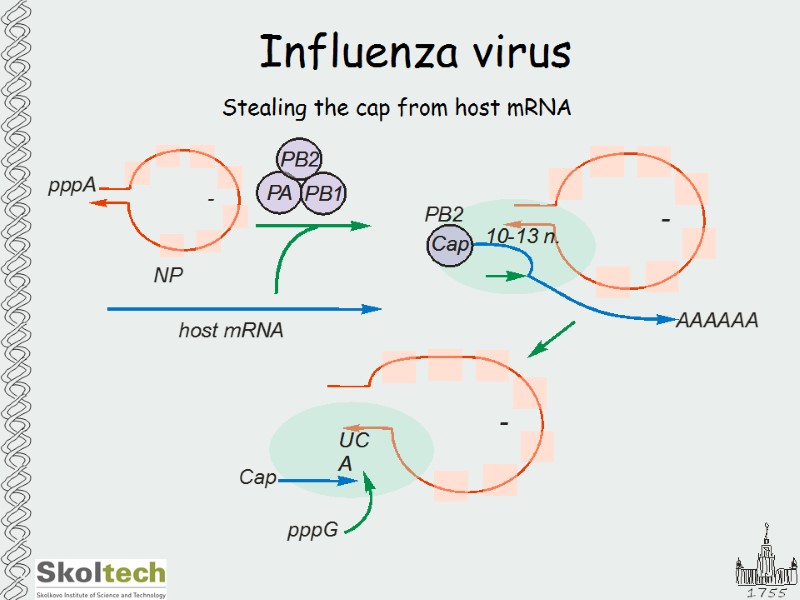 Influenza virus Stealing the cap from host mRNA
Influenza virus Stealing the cap from host mRNA
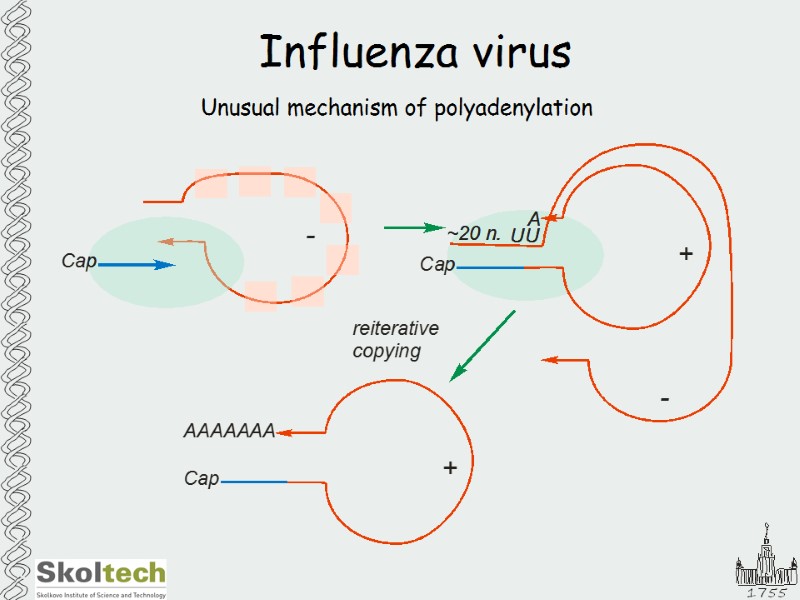 Influenza virus Unusual mechanism of polyadenylation
Influenza virus Unusual mechanism of polyadenylation
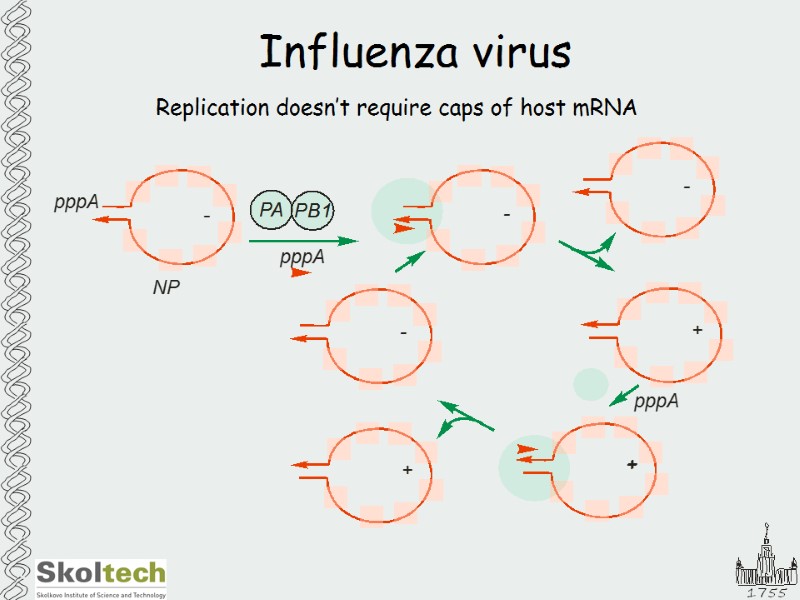 Influenza virus Replication doesn’t require caps of host mRNA
Influenza virus Replication doesn’t require caps of host mRNA



















































